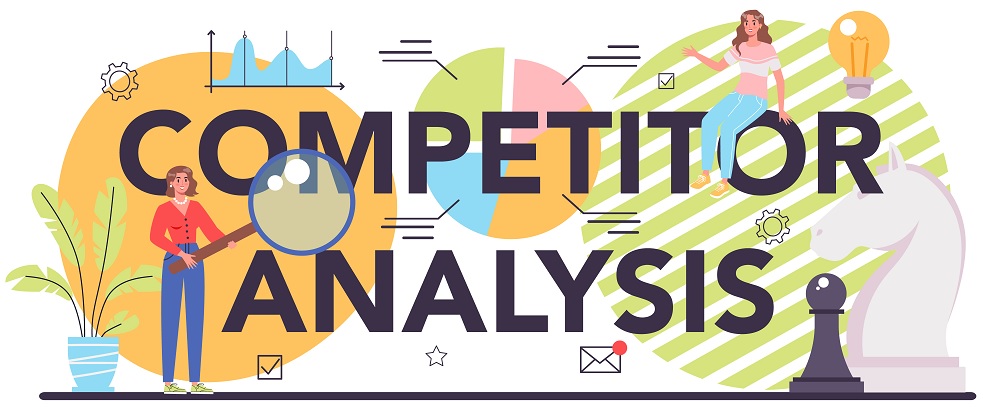Loyal Customers + Consistent Brand Building + Powerful Product Visibility = Digital Marketing Strategy
While this formula may seem ideal for any organization, digital marketing offers a unique advantage for small businesses. It levels the playing field, providing a powerful toolbox to achieve these goals even with constraints if any like budgets!
However, crafting an effective digital marketing strategy can feel overwhelming.
In this blog, we break down the steps to formulating a winning digital marketing strategy specifically for small businesses. We’ll provide a step-by-step guide to help you create a result-oriented digital marketing strategy and unlock the full potential of this powerful formula.
Step 1:
First, define your goals.

Digital marketing can fetch you many results like branding, lead generation, brand awareness, advertisement, and a few others. You should be clear about what you want to achieve. Defining what you want is the primary requisite and your goals should also be Specific, Measurable, Achievable, Realistic, and Time-bound. In other words, it should be SMART. A few examples would be:
- Increase website traffic by 30% in the next six months.
- Generate 200 new leads per month through online campaigns.
- Achieve a 10% conversion rate on email marketing campaigns.
Step 2:
Next comes understanding your audience.
Knowing your audience is the next task that would take you towards success easily. The more deeply you understand them, the better equipped you are to cater to their needs and achieve your business goals. Know their characteristics, persona, choices, preferences, behaviors, and pain points. Once you know your audience, segment them into different personas that differentiate them in terms of age, gender, geo etc. The steps involved are as below:
- Segment them according to demographics like age, gender, income, location, etc.
- Segment them according to psychographics like Interests, values, lifestyle, etc.
- Segment them according to geographics like country, state, community, etc.
Use tools like Google Analytics, Social Media insights, and customer surveys to know the behavior of each segment and gather information about them.
Step 3:
Conduct a competitor analysis.

Understand your competitors and their products as well as their target market segment. Analyze your competitors to understand their strengths, weaknesses, opportunities, and threats. Also, understand the strategies of your competitors to understand what’s working and what’s not. This will help you understand the gaps in the market and also the opportunity areas that exist for you to differentiate from them and offer something better to your target audience. Here’s how you can do a competitor analysis.
- Identify Competitors: List direct and indirect competitors.
- Analyze Online Presence: Website, social media, content, SEO, PPC.
- SWOT Analysis: Identify Strengths, Weaknesses, Opportunities, and Threats
Step 4 :
Choose the right channel of communication.
This is a crucial step that should be done with thorough research and with meticulous care. You will need your customer persona and their characteristics to choose a channel that has most of your target persona. Based on your goals and the characteristics of your audience choose the most effective digital marketing channel to focus on. The channels typically include the following.
- Content Marketing: Blogs, videos, infographics.
- Social Media Marketing: Facebook, Instagram, LinkedIn, Twitter.
- Email Marketing: Newsletters, automated campaigns.
- SEO: On-page and off-page optimization.
- PPC: Google Ads, social media ads, etc.
- Influencer Marketing: Collaborations with influencers.
Step 5:
Create an effective content strategy for your target audience.

Content is the be-all and end-all of digital marketing that attracts, sustains, and nurtures your target audience. Develop a content strategy that would fulfill your goals. Your content should be different if your goal is branding, and it should be gated content that arouses interest in your audience if your goal is generating leads. Here’s how you can define an effective content marketing strategy.
- Content Calendar: Plan your content in advance, scheduling posts and campaigns.
- Content Types: Mix of blog posts, videos, infographics, podcasts, etc.
- SEO Optimization: Use keyword research to optimize content for search engines.
- Engagement Tactics: Encourage comments, shares, and interaction with your content.
Step 6:
Decide the budget.
Allocate a budget that aims to attain your goals through your communication channels. You also need a proper budget to carry out your digital marketing activities which includes labor and promotion costs. Of course, there are the costs of content creation, advertising, tools, and resource costs. To decide the budget, consider the points as stated.
- Estimate Costs: Research about the costs for each channel and the tactics needed.
- Prioritize Spending: Focus on high-impact areas that align with your goals.
- Monitor and Adjust: Regularly review your spending and ROI, adjusting as needed.
Step 7:
Implement Marketing Automation.
Use the marketing automation tools to streamline and enhance your digital marketing campaigns. This helps in managing repetitive tasks and provides personalized experiences for your audience as well. This is how it is to be done.
- Choose Tools: Tools like HubSpot, Mailchimp, and Hootsuite can help automate email campaigns, social media posts, and lead nurturing.
- Set Up Workflows: Automate follow-ups, segmentation, and personalized messaging.
- Monitor Performance: Track the effectiveness of automated campaigns and refine them over time.
Step 8:
Measure and Analyze Your Performance.
If you have to achieve the specific goals that you have set for yourself, you have to regularly measure the performance of your digital marketing efforts using analytics tools. This helps in understanding what works, what doesn’t, and where to make improvements to achieve the set target.
- Track Key Metrics: Traffic, engagement, conversion rates, ROI.
- Use Analytics Tools: Google Analytics, social media analytics, email marketing analytics.
- Adjust Strategies: Based on data insights, make necessary adjustments to improve performance.
Step 9:
Stay updated and adapt to the market trends.

In the ever-evolving realm of digital marketing, it’s important to stay updated with the latest trends, tools, and best practices to keep your strategies relevant and effective. In this context follow the trends that are adopted by the industry leaders and the influencers. Take the below approach for staying updated on market trends.
- Follow Industry Blogs: Follow the famous industry blogs and the trends and topics they write on.
- Attend Webinars and Conferences: Keep learning from industry experts.
- Network with Peers: Join digital marketing groups and forums.
Now you hold the key to unlocking explosive growth for your growing business. This guide has equipped you with a roadmap to craft a winning digital marketing strategy, tailored specifically to your needs. Remember, the most powerful aspect of digital marketing is its accessibility. Even with budget constraints, you can leverage these strategies to build brand awareness, generate leads, and convert them into loyal customers. Take one step at a time, and watch your business flourish in the digital landscape.
0 Comments